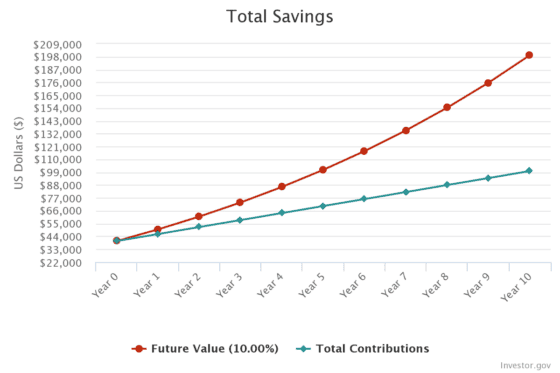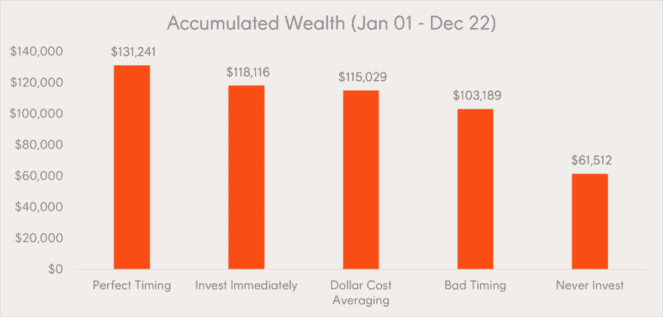The biggest fear of S&P/ASX 200 Index (ASX: XJO) investors, especially those who are just starting out, is making losses.
Fair enough. Who wants to lose money, right?
Unfortunately, the long-time investment axiom "sell high and buy low" does a great disservice to those punters paralysed by fear.
It implies that you can time the market. That is, you would know when "high" is and when "low" is.
But old-timers all know that is impossible.
If you hear of people successfully timing their buying and selling of ASX 200 shares, it's great luck, not management.
The fact is, no one knows what will happen in the future. If they did, they would be mega-wealthy and the rest of us would be crushed.
And they certainly wouldn't have to make a living selling their investment formula.
Compounding + ASX shares = $$$
The inability to time the market means it's best to build up one's portfolio at regular intervals.
Doing that means the highs and the lows of the market average out. It's called dollar-cost averaging.
As the headline suggests, try to set aside $500 each month to add to your nest egg.
Starting with $40,000, which is the average savings balance of Australians, your ASX stock portfolio could look very handsome over the long run.

After just 10 years of adding $500 each month and receiving a 10% compound annual growth rate (CAGR) from your shares, that balance will have become a phenomenal $199,374.
How amazing is that?
Imagine what you could do with almost $200,000 — pay off debts, go on an overseas holiday, buy a new car.
Or you could even keep it invested to receive $20,000 of passive income each year for the rest of your life.
Timing doesn't really matter anyway
The other thing I'd remind you is that even getting the timing horribly wrong is no big deal when you let the investment brew over the long term.
The boffins at Betashares earlier this year calculated what would have happened to five different investors who added $2,000 each year to their portfolio from 2001 to 2022.
One had perfect timing and managed to buy ASX 200 shares at the lowest point in each year. Another just bought immediately on the first trading day of every year.
The third person practised careful dollar-cost averaging by dividing the $2,000 evenly to buy at the start of each of the 12 months.
The fourth person was devastated by bad luck and only bought shares on the most expensive day each year. The last person was always wracked by fear and never ended up buying any shares.

After 22 years, the amazing thing was that there was not much difference between the person who had perfect timing and the one who just bought at the first opportunity.
Another surprising fact was that dollar-cost averaging lost out to the person who invested immediately.
But, of course, the biggest loser of all was the one who was too scared to buy.
This is why fear will cost you more money than any mistiming in buying and selling ASX shares.
Good luck, everyone.









